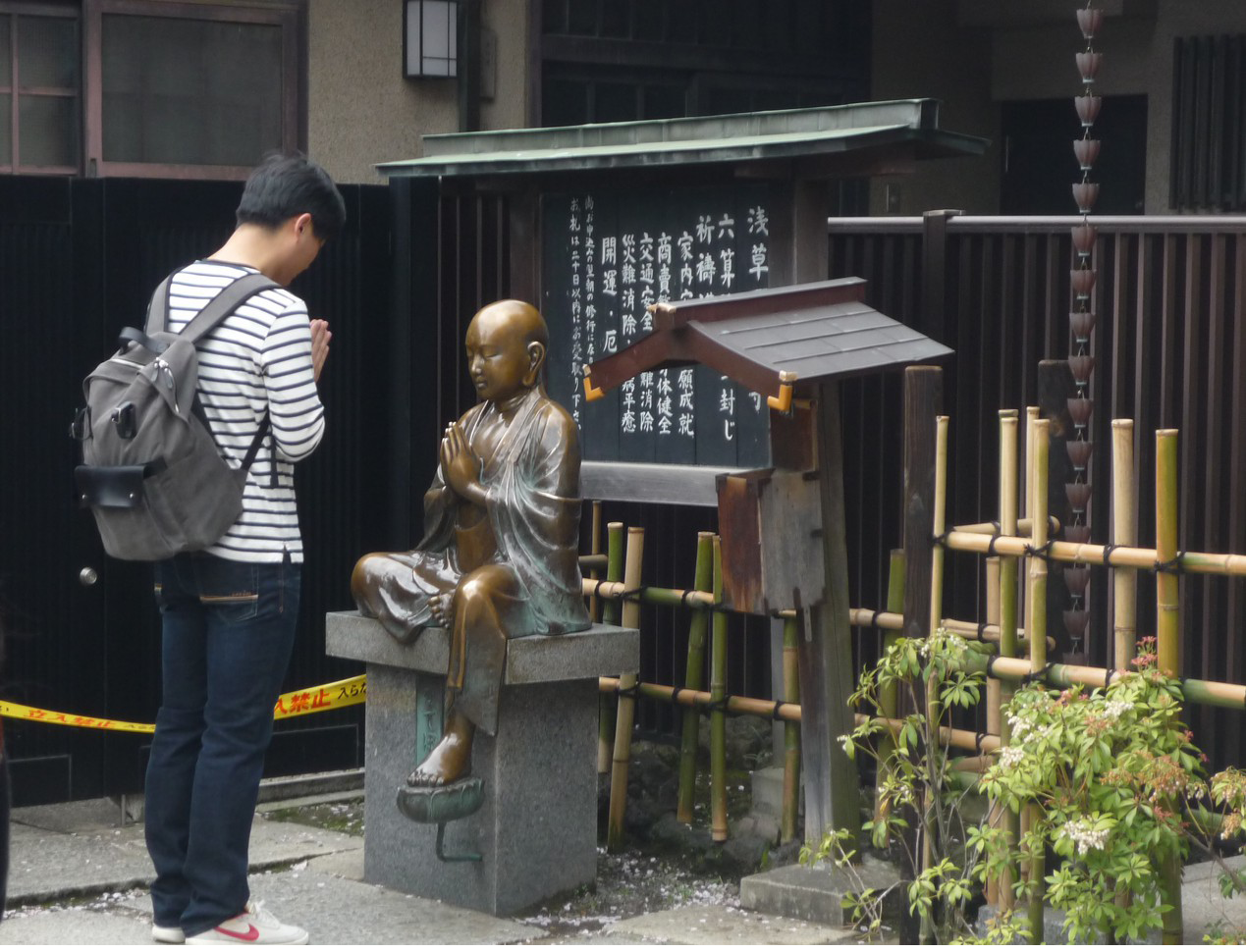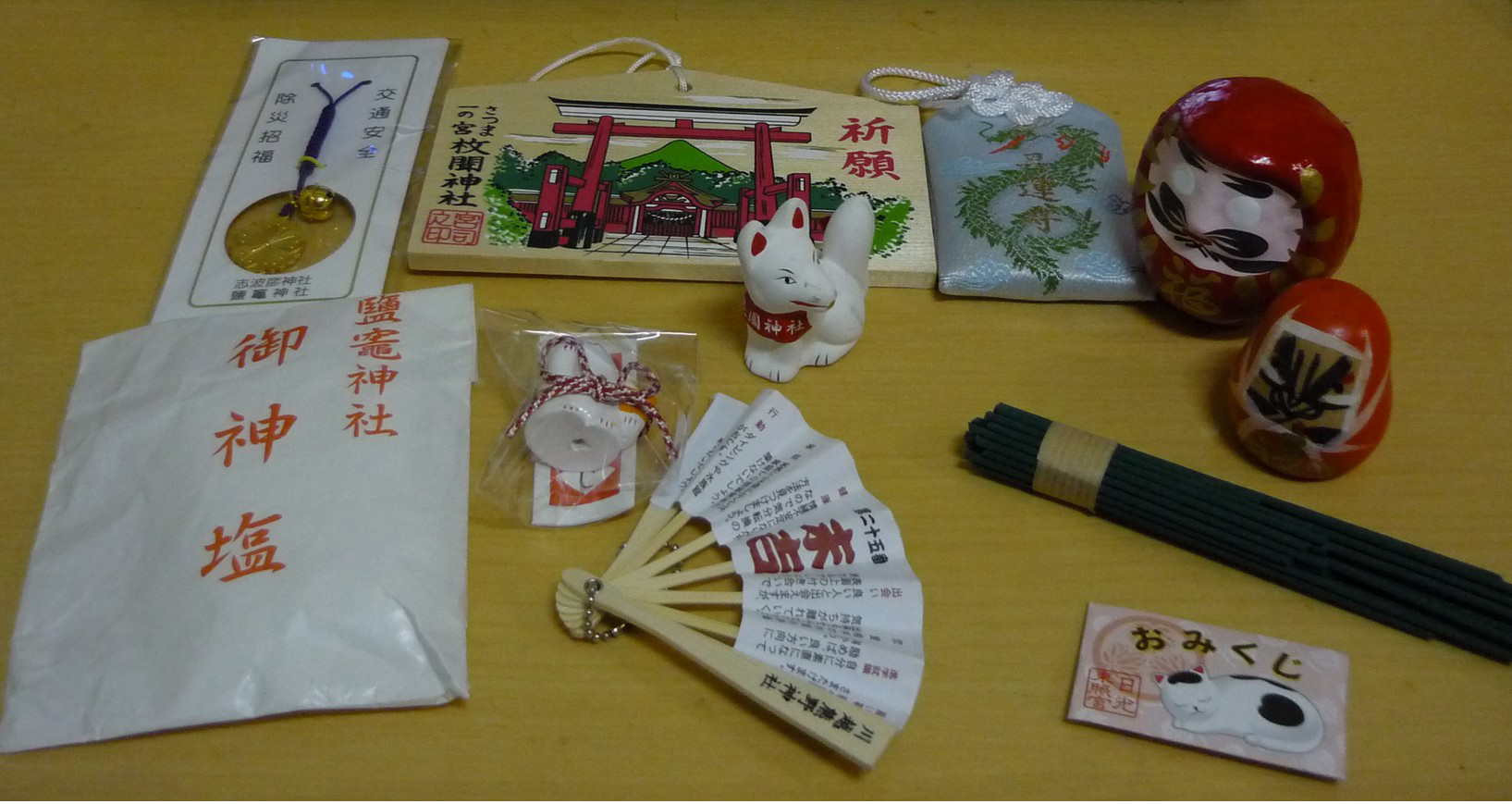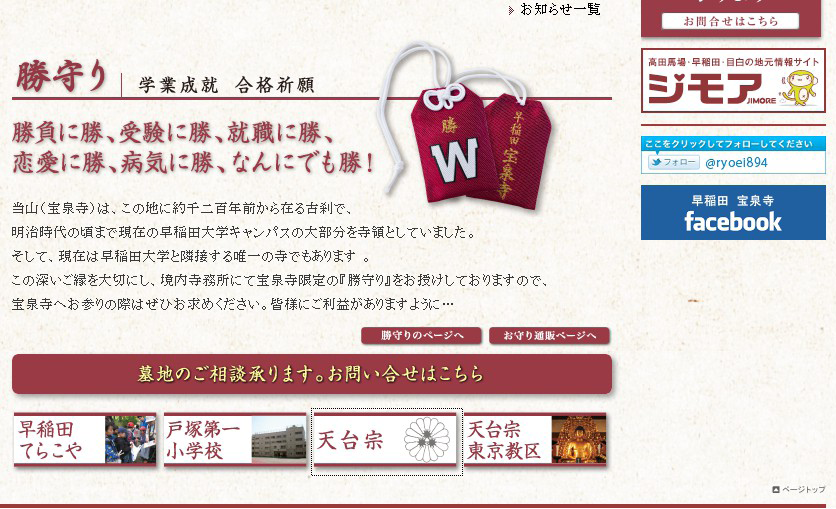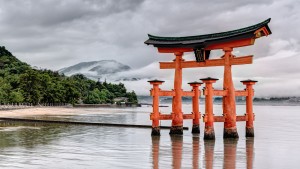《English Magazin》Vol.2 : Japanese Religions
みなさん、こんにちは!帰国子女、海外経験者コミュニティーのBeyond Borderです!
『競争力を持った国際日本人になる!』、『日本の良さを再発見し、世界中に広めよう!』をスローガンに始まった、現在唯一の英文記事<Introducing Japan>第2弾!
Japan and Religion(s)
If you happen to visit Japan you will obviously visit at least some Shinto shrines and Buddhist temples. My own experience leads me to say that many visitors in Japan are usually more surprised by the relationship between Japanese and religion rather than by the temples and shrines themselves. Indeed coming from countries where one of the main monotheist religions is or was dominant (Christianity, Islam or Judaism) it is really interesting to see that Japanese model is totally different from what we can experience in our native countries.
Japan does not have any official religion but the two main ones are Buddhism, imported centuries ago from China and Korea and adapted since that time to Japanese context, and Shintoism, a local plytheist religion which has appeared with Japanese culture. Buddhism is based on the teachings of Buddha and its disciples. Shintoism is a collection of beliefs based on traditional gods, the kamis. Kamis are said to be around 8 millions ! For a long time these two religions were mixed before the government decided to separate them at the Meiji Restoration at the end of 19th century. They are still quite mixed in many people’s mind.
At first it is interesting to notice that both old and young people go to shrines and temples not only to visit them by also to pay their respects. Whereas Europe and other parts of the world “suffer” from a disinterest among young people in religious practices, Japanese youth seems to still follow the traditions. And here is the point : if you take a Japanese person who has just finished to pay his/her respects to the gods and ask if this person is a Shintoist or a Buddhist you may be answered a sincere “No, why ?”. Some international surveys say that 31% of Japanese population defines itself as atheist. But the true is much more complicated.
 Being religious in Japan is strongly based on traditions passing from a generation to an another. In that sense paying one’s respects to a temple or a shrine is as connected as national and cultural customs than for a religious purpose. In that sense faith is not at the core of religion in Japan. Furthermore rules which have to be followed are way more different : Shintoism for example has no dogmas nor indisputable truth as the three main monotheist religions have. Its principles are simple : respecting the ancients and nature as we are part of it as a whole.
Being religious in Japan is strongly based on traditions passing from a generation to an another. In that sense paying one’s respects to a temple or a shrine is as connected as national and cultural customs than for a religious purpose. In that sense faith is not at the core of religion in Japan. Furthermore rules which have to be followed are way more different : Shintoism for example has no dogmas nor indisputable truth as the three main monotheist religions have. Its principles are simple : respecting the ancients and nature as we are part of it as a whole.
One of the most surprising thing is the presence of shops within shrines and temples ward. Selling all this products, calendars, lucky charms, icons and so on would sounds like a superstitious heresy for many monotheist religion believers. In my country, France, the very few things one can buy in a regular church would be small candles to light up. However in Japan it is perfectly accepted and common to buy a lucky charm or any other things bringing gods’ good fortune on oneself. If one wants to pass an exam, paying one’s respects to a Bouddhist temple or a Shinto shrine, or even both, and buy a lucky charm bringing luck could be a good way to increase the probability to succeed. Launching a start-up is a quite thrilling experience : buying a yellow Daruma and fill his left eye while setting a goal may put you under good omens until the goal is reached. At that moment you will fill the right eye while thanking the gods for their help.
 A little collection of what can be bought in temples and shrins : lucky charms, souvenirs, predictions, incense, Drama, statues, and even sacred salt !
A little collection of what can be bought in temples and shrins : lucky charms, souvenirs, predictions, incense, Drama, statues, and even sacred salt !
It is sometimes true that we feel the big “business” behind these products. Two examples come in my mind. Once in Nikkô, a very nice city located 2hours north of Tokyo, there is an incredible shrine that everyone should visit at least once named Tôshôgû Dedicated to the now considered living god Ieyasu Tokugawa (first shogun of the Tokugawa family and a major figure in Japanese history) the shrine has several buildings that it possible to visit. Some people will grant visitors with explanations about the shrine but after 5 minutes of explanations they will talk about the different lucky charms proposed in the temple. In an another building whose ceiling hosts a remarkable painting named the “Crying dragon” the guide showed us the very specific echo produced by the ceiling when one hits two clappers and quickly precised that the lucky charms imitating the sound cost 1000 yens. As my wallet is usually quite empty I went through the lucky
charms storage quite quickly.
The second example is just near my university, Waseda University in Tokyo, where there are several temples and shrines. I was once quite surprised to discover than one of them was selling specific religious products wearing Waseda’s logo. Thinking about Buddha supporting specificically Waseda students was quite funny as the same thing would definitely not exist in my country.
 Waseda lucky charms proposed on the temple’s website
Waseda lucky charms proposed on the temple’s website
Facing a cultural shock while visiting or living in Japan may occur because of many reasons and religious matter can be one of them. Japanese conception of what is a religion is very different from monotheist and western conceptions. This very “practical” aspect within religion is to me quite interesting as a part of Japanese complex culture. Even though you are neither Buddhist nor Shintoist believer, do not hesitate to pay your respects, nobody will neever question you about that !
Written Credit by Aurelien Diouf
登録
今すぐ役立つ限定情報をGETしよう。

